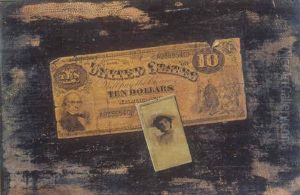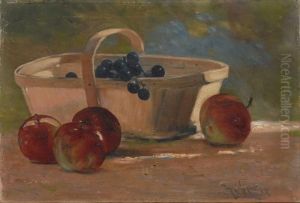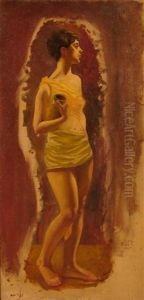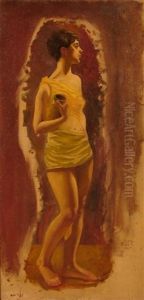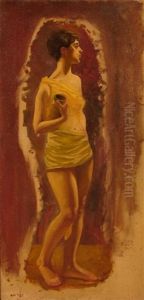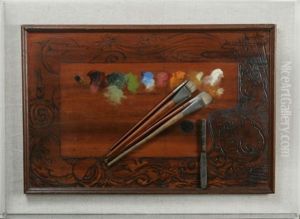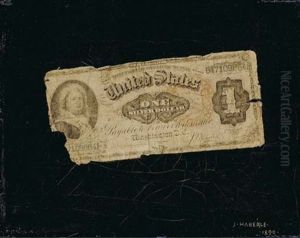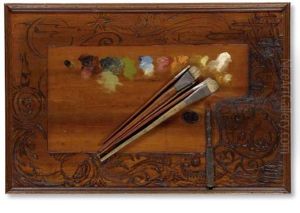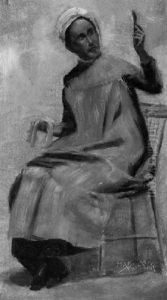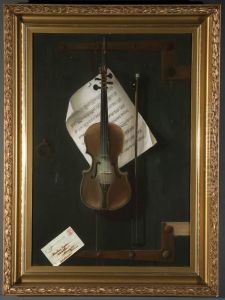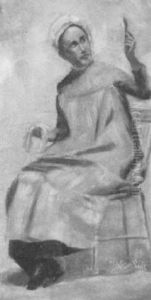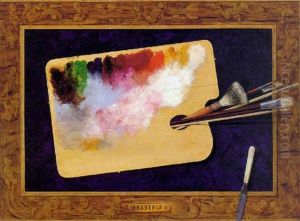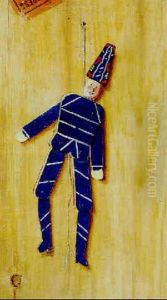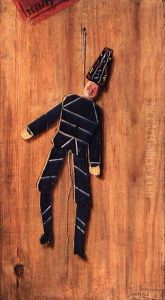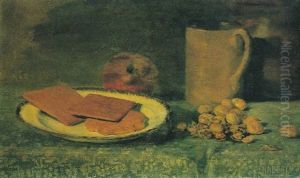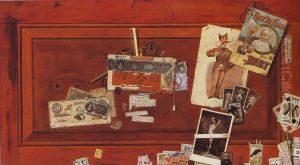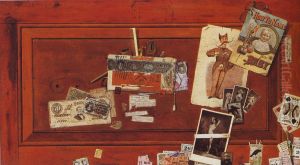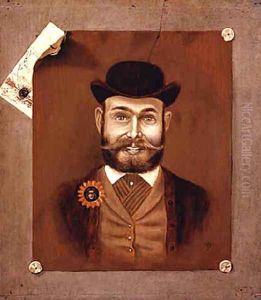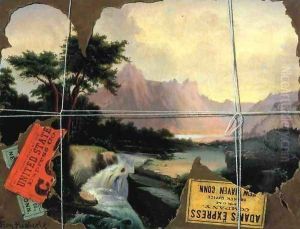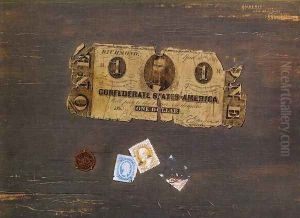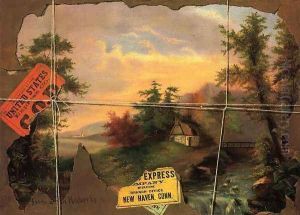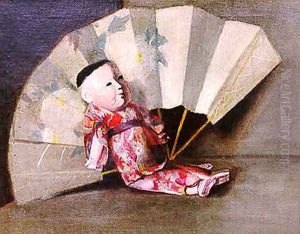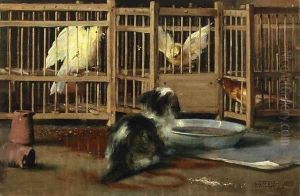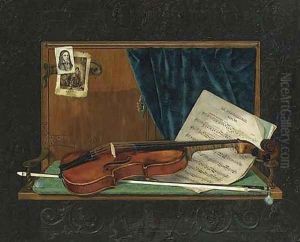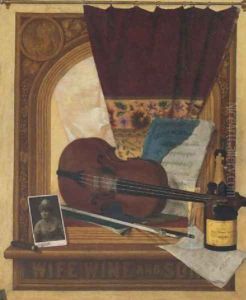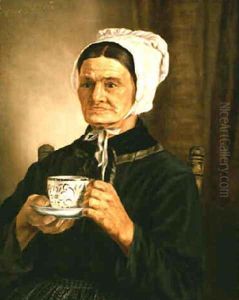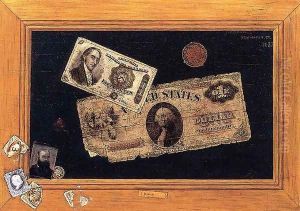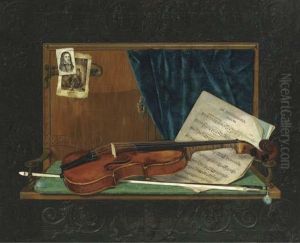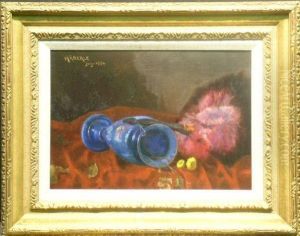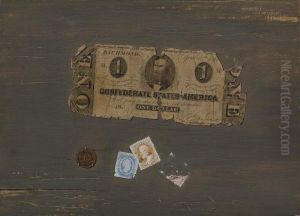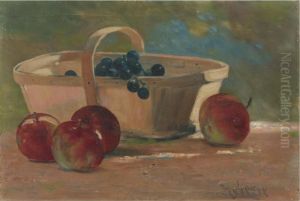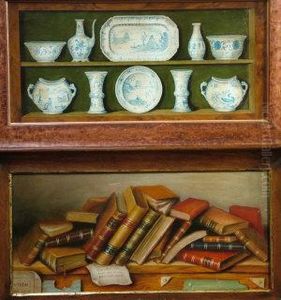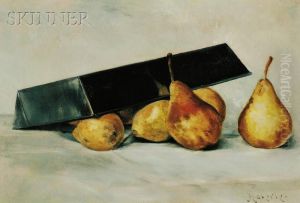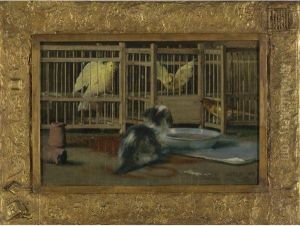John Haberle Paintings
John Haberle was an American painter known for his lifelike still-life paintings and is considered one of the great American trompe-l'oeil (deceive the eye) artists of the late 19th century. Born on January 22, 1856, in New Haven, Connecticut, Haberle began his career working in a paint factory, which is where he may have acquired some of his technical skills in mixing and applying paints.
Haberle's early works were more traditional still lifes, but as his career progressed, he specialized in the trompe-l'oeil style, creating astonishingly realistic paintings that fooled the viewer into believing they were looking at actual objects. He often painted money, paper notes, and stamps, which at the time was controversial and even led to questions about the legality of reproducing currency.
Despite the incredible realism in his work, Haberle did not achieve significant financial success during his lifetime. His paintings were appreciated by connoisseurs and collectors who admired the skill and wit involved in his compositions. Haberle's meticulous attention to detail and his ability to replicate textures and materials was unmatched. He also had a sense of humor about his work, often including a self-referential joke or visual pun in his compositions.
Haberle's most famous paintings include 'Grandma's Hearthstone', 'The Old Violin', and 'A Bachelor's Drawer', which are often cited as masterpieces of trompe-l'oeil art. His work was exhibited at the Pennsylvania Academy of the Fine Arts and the National Academy of Design.
Toward the end of his life, Haberle's fame dwindled, and he lived in relative obscurity. He died on September 24, 1933, in New Haven, Connecticut. Today, however, Haberle's work is recognized for its technical brilliance and is held in high regard by art historians and collectors. His paintings can be found in major museums across the United States, including the Metropolitan Museum of Art in New York and the Art Institute of Chicago.
